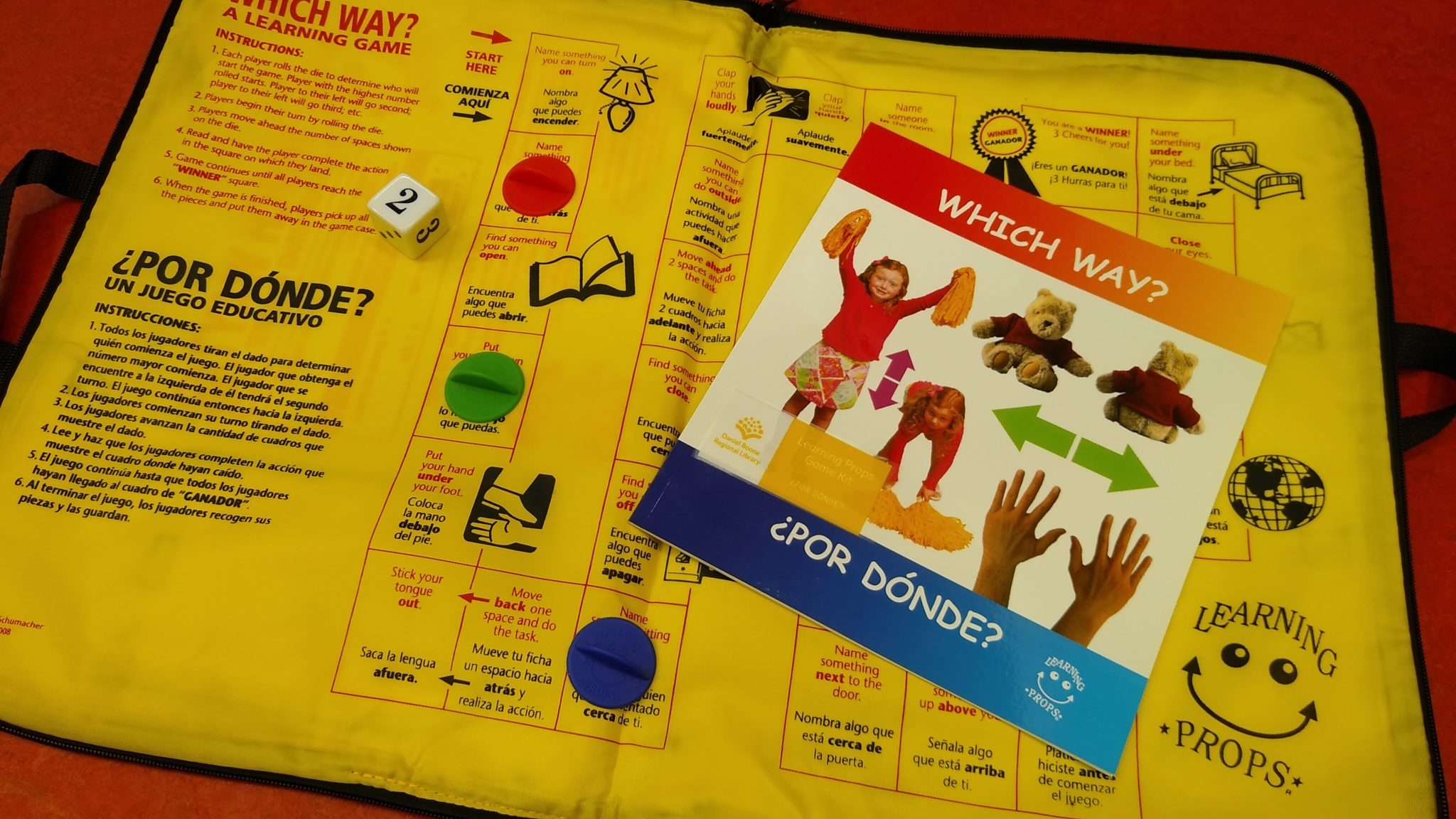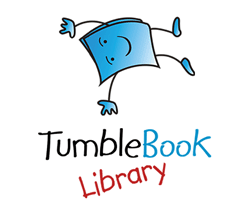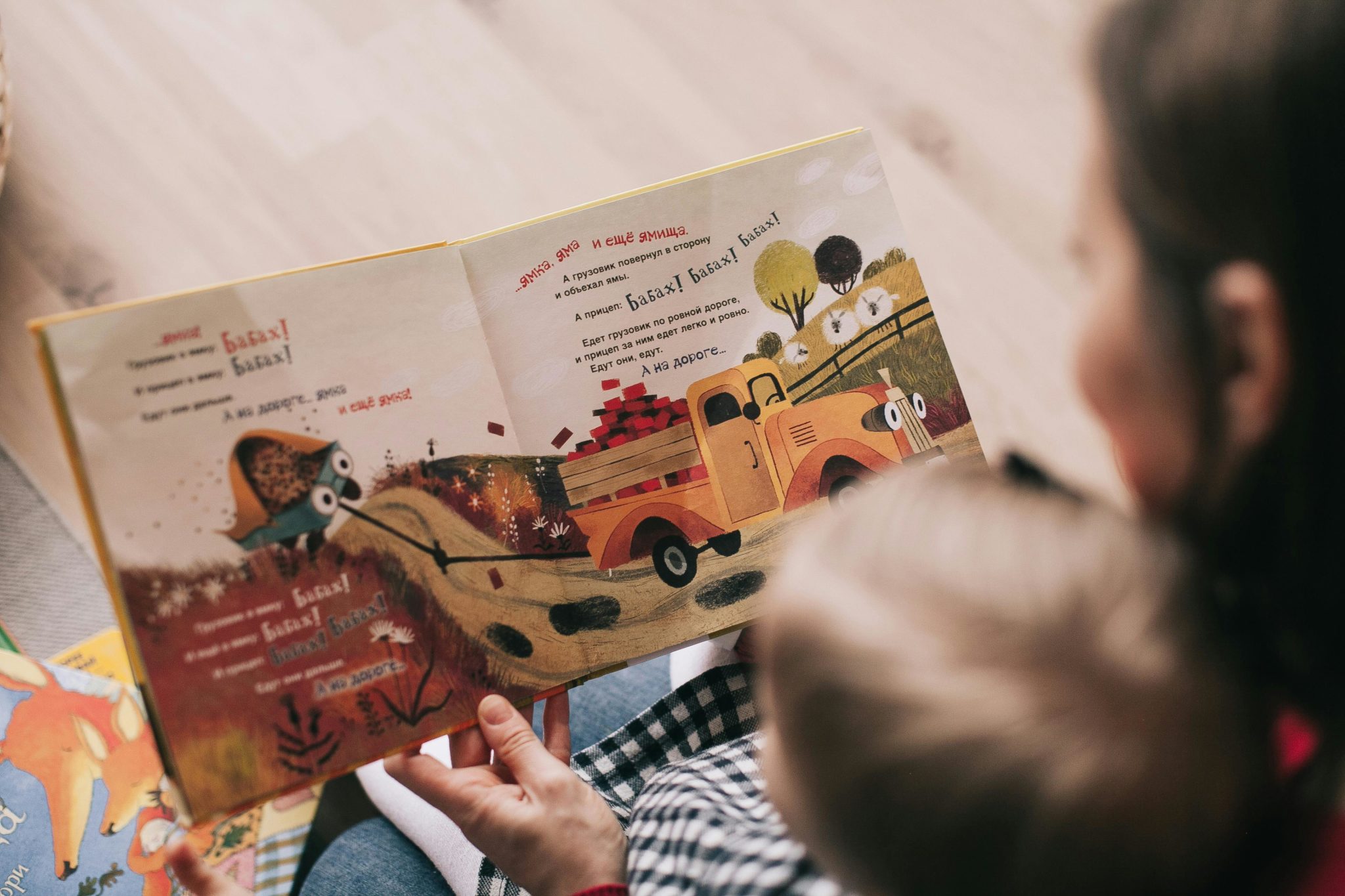
When I’m not answering questions and handing out stickers at the Children’s Services Desk, I moonlight as an ESL (English as a second language) instructor at the University of Missouri. So it will come as no surprise that I love to help library kids and their families on their language learning journeys!
When I chat with parents and caregivers about this topic, I often hear questions like:
- Will my child get confused if we introduce another language?
- How can we balance English and another language in our home?
- How do I raise a bilingual child when I’m not fluent in another language myself?
- How can I get my child excited about learning a new language?
These are big questions with oftentimes confusing answers. With a little help from language learning experts at the National Library of Medicine, allow me to dispel some myths and worries:
- In many cultures, it’s completely normal to learn more than one language from a very young age. There are quite literally millions of bilingual (and even trilingual!) children learning and thriving in multilingual communities all over the world! It’s true that young children may mix vocabulary and sentence structure from time to time, but this isn’t a sign of confusion. They’re just learning to code-switch and creatively use language to navigate their world.
- Using two languages in one household can certainly feel like a balancing act, but it can be done! Some families use the “one person, one language” strategy; for example, maybe Mom speaks English, and Papa speaks French. Other families may use one language at home and another language in public spaces. Use whatever method works best for your household — just aim to provide equal access to both languages!
- If you’re not fluent in the language you wish to teach your child, it’s time to build a village of supporters! The best support system comes when you build real relationships with other speakers and get involved in a cultural community. There, you and your family will learn language and cultural lessons you won’t pick up from a book or an app.
- Children simply won’t get excited about learning a new language unless they truly see the value in using it. Make these new language experiences fun! Meet with friends, family and community groups to play and practice. Introduce special books, games, music and videos to spice up your language learning in an exciting and authentic way (the library can help with that — read more below!).
Whether you’re teaching your child a new language or passing down your family’s heritage language, we’re committed to supporting you in any way we can. The library is proud to offer a selection of language learning resources available to check out or use at home through our downloading and streaming services.
Books
First, let’s take a quick tour of our bilingual and Spanish-language section! We have a whole shelf dedicated to books in other languages in the children’s area. You’ll find this section nestled between juvenile nonfiction and graphic novels.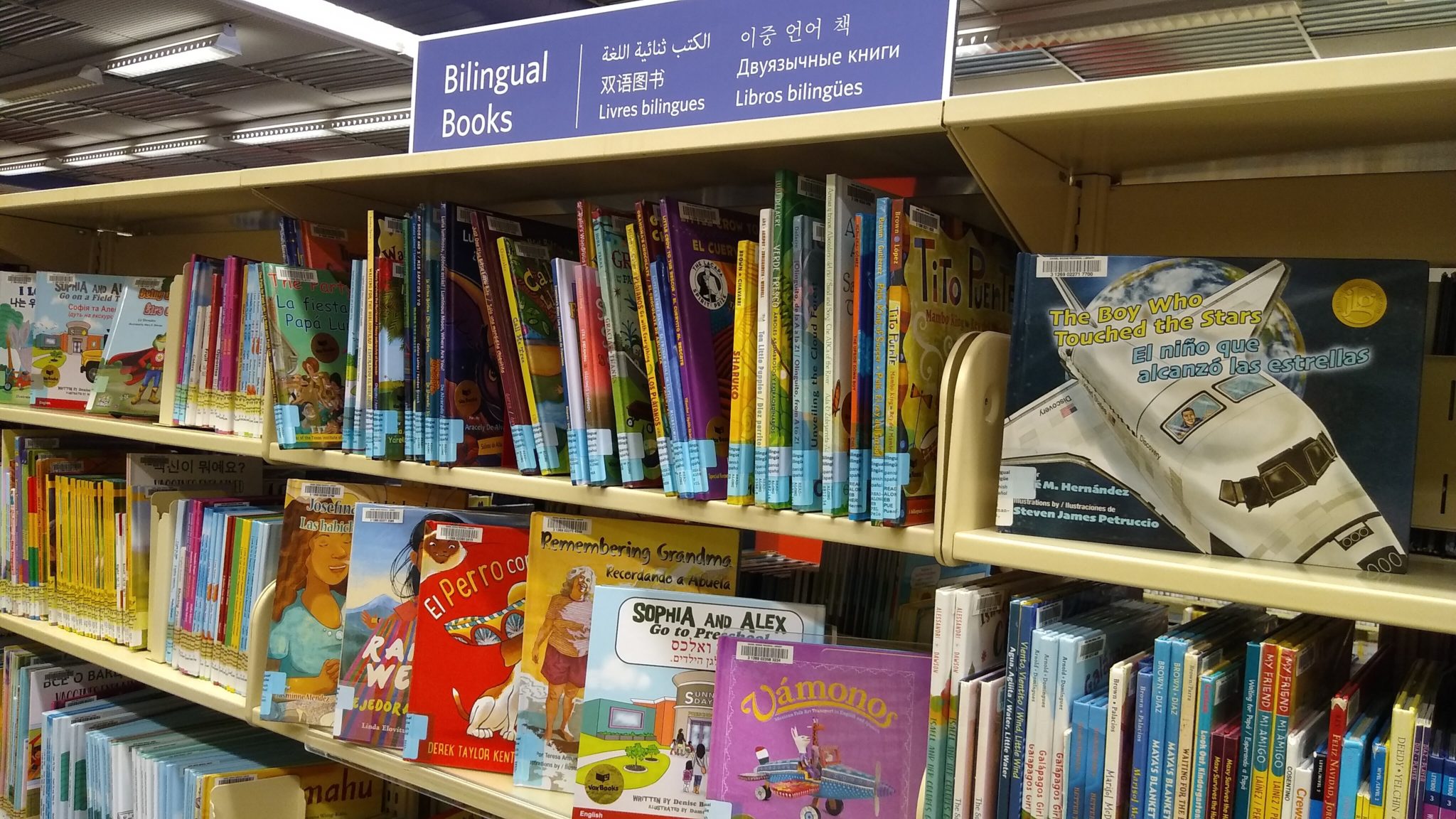
Bilingual books include text in English alongside another language. Tell the story in both languages or just choose one! Some of our bilingual books even include recorded audio so that you can listen to a real speaker tell the story. We have a great selection of bilingual children’s books available in the following languages:
- Spanish
- Arabic
- Chinese (Mandarin)
- French
- Russian
- Korean
- Japanese
As I explored the stacks, I also found a few titles in languages like:
- German
- Italian
- Ukrainian
- Swahili
- Vietnamese
- Burmese
- Hindi
- Urdu
- Tagalog
- Native American languages (like Hawaiian, Mi’kmaq and Cherokee)
We also have a large selection of books entirely in Spanish, from board books to chapter books (we even have Spanish-language books for adults on the second floor!).
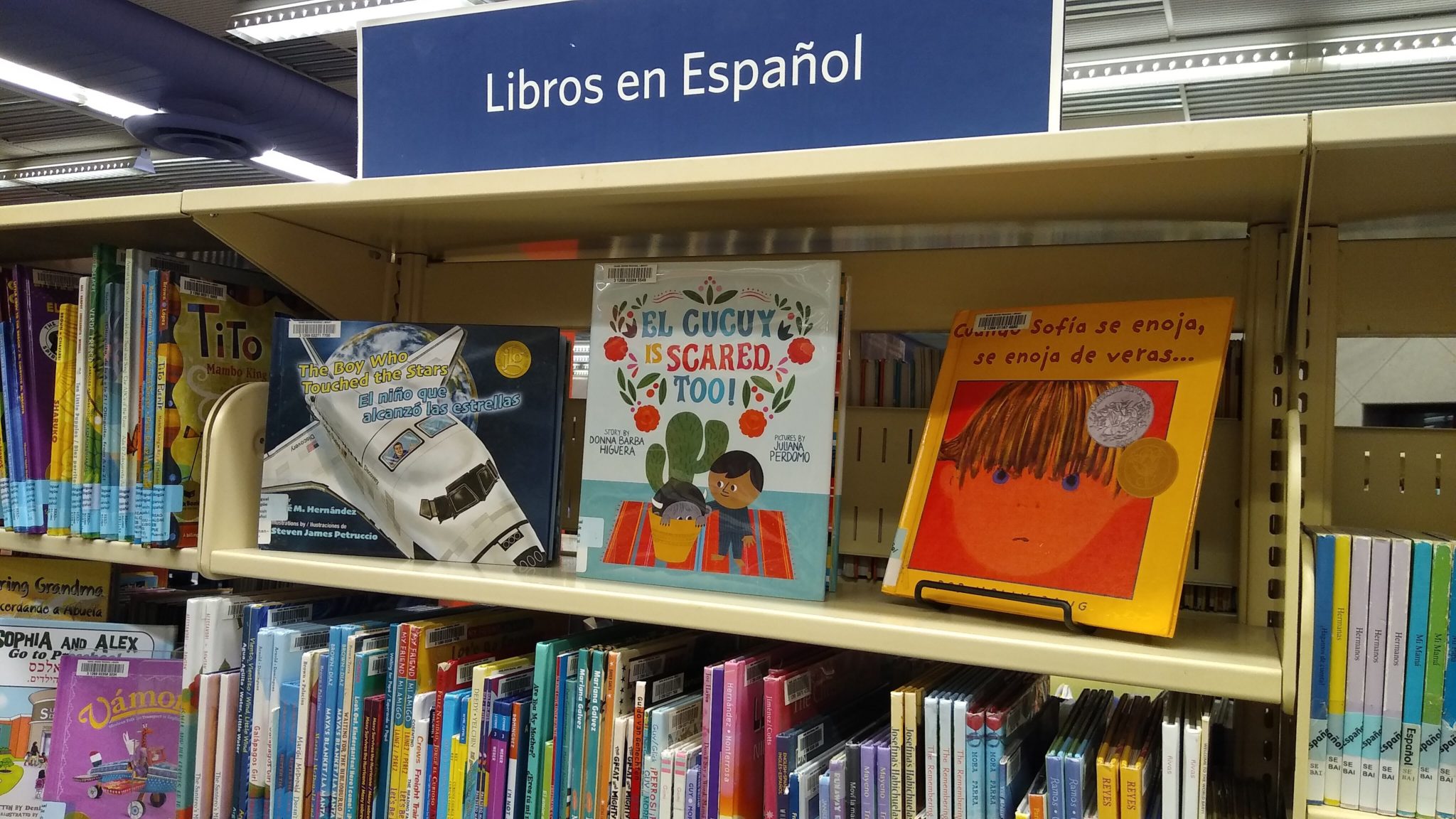
Reading an old favorite in Spanish, like “Buenas noches, Luna” (“Goodnight Moon”) or “Diario de Greg” (“Diary of a Wimpy Kid”), is always a fun language learning experience. I also recommend that adult learners give children’s books a try! Illustrations aid comprehension, while simple vocabulary, sentence structure and storyline allow you to focus on your language skills. The sense of accomplishment that comes from finishing a book in your target language is like none other!
Apps and Websites
You can access even more language learning resources through our digital branch.
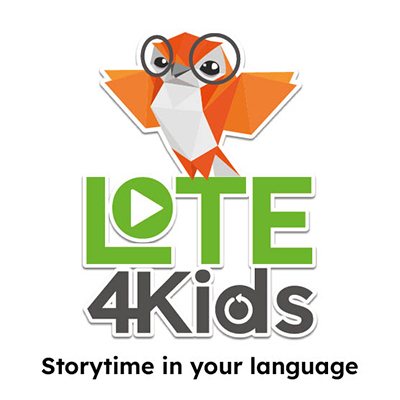
LOTE4Kids offers a huge selection of animated stories in over 50 languages (including American sign language!). If you can’t find books in your target language on our library shelves, there’s a very good chance that you’ll find exactly what you’re looking for on LOTE4Kids!
🤓 Here’s a pro tip: if you’re a language beginner, try adjusting the storyteller’s speed using the gear icon at the bottom of each story. 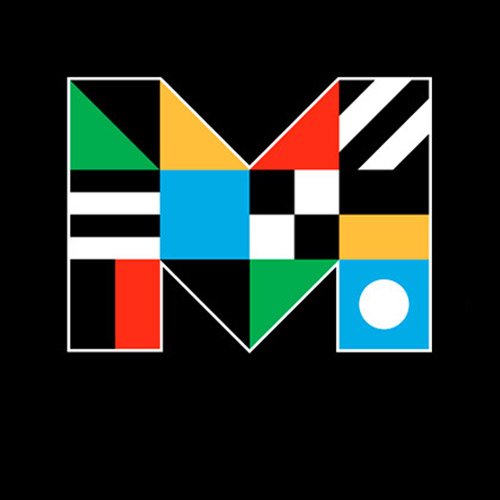
Teens and parents might also enjoy the Mango language learning app. Alternative apps like Duolingo, Babbel and Rosetta Stone can be expensive and frustratingly simplistic for dedicated language learners. Accessing Mango with your library card solves both of these problems! As a language teacher myself, I prefer Mango because it takes the time to explain grammar concepts and offers more in-depth listening and reading activities. No app alone will make you fluent, but Mango is a great option for beginners and those looking to keep their skills sharp.
Game Kits
Our newest resource for Spanish learners and speakers is our bilingual game kits! These little bags unzip to reveal an interactive game board, complete with game pieces, a die and an accompanying book. Concepts like colors, numbers, clothing and directions are useful for young children and beginning language learners alike. On a personal note, I had great success using our game kits when tutoring refugee children. Some fun and friendly competition was just the thing we needed to liven up our English lessons!
